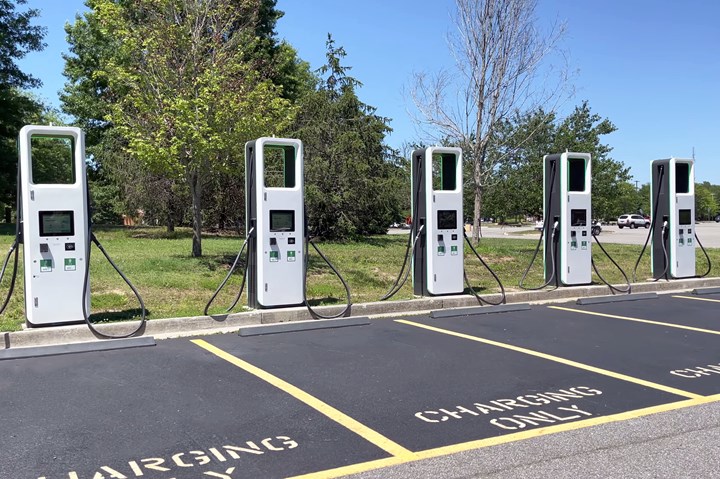U.S. DOE presents $96 million to advance clean vehicle technologies
Funding will focus on expanding EV charging accessibility, creating clean non-road vehicles and advancing new materials and electric drive systems all to ultimately cut carbon emissions.
The U.S. Department of Energy (DOE, Washington, D.C., U.S.) has announced a $96 million funding opportunity to support decarbonizing the domestic transportation sector. The funding will focus on expanding electric vehicle (EV) charging accessibility, create cleaner non-road vehicles through electrification and the use of alternative fuels and develop electric drive components and materials to maximize EV efficiency and affordability.
Non-road vehicles, including agricultural and construction equipment, rail, marine and aviation, are a major source of pollution, emitting more carbon pollution than any other sector of the U.S. economy, according to the DOE. Lowering vehicle emissions will support the current U.S. administration’s goal to achieve a net-zero economy by 2050. Further, in accordance with the president’s Justice40 Initiative, applicants for this funding must show how proposed projects will benefit traditionally disadvantaged communities that lack access to clean energy sources.
“To strengthen our transportation sector to support our growing economy, DOE is investing in clean mobility options that will eliminate harmful emissions, reduce our reliance on volatile fossil fuels and cut energy costs,” U.S. Secretary of Energy, Jennifer M. Granholm says. “Achieving President Biden’s climate goals will require expanding accessibility to electric vehicles for all drivers and modernizing vehicles that power the agricultural and construction industries.”
Composites technologies continue to grow in use as suppliers continue efforts to meet more demanding requirements for EV battery enclosures. See “Price, performance, protection: EV battery enclosures, Part 1.”
In support of the call for EVs to make up half of all automotive sales by 2030, DOE says it is ensuring that the nation’s charging infrastructure is prepared to meet the increased demand. For many in the U.S., EV benefits such as low maintenance and fueling costs are enhanced by having accessible charging near to homes and workplaces. DOE is committed to developing solutions in underserved areas and for drivers who do not have access to charging at home. DOE will also invest in projects that create regional refueling infrastructure plans for zero-emission medium- and heavy-duty vehicles powered by electricity and hydrogen fuel.
This investment complements the $5 billion made available under the new National Electric Vehicle Infrastructure Formula Program, established by the U.S. administration’s Bipartisan Infrastructure Law, to build out a national EV charging network.
New materials and advanced electric drive systems are reported to be key to developing next-generation electrified vehicle platforms, including full battery electric and fuel cell electric vehicles (BEV/FCEV) with smaller, more affordable electric systems for improved performance and durability. DOE will also fund projects that seek to develop novel multifunctional materials for EVs and improve powertrain performance in EVs for increased functionality and reliability.
DOE will also fund research on non-road engine technologies that are less harmful to the environment and develop electric, natural gas, and other alternatives for fueling and powering non-road engines.
Applicants for the Fiscal Year 2022 Vehicle Technologies Office Program Wide Funding Opportunity Announcement must submit a concept paper by August 25, 2022. To apply, applicants must register with and submit application materials through a DOE online application portal located here. Full applications are due on November 10, 2022.
Related Content
-
On the radar: Innovations in composite battery enclosures
A look at recently reported design, material and process innovations for composites-intensive battery enclosures, developed to support the ramp-up of EV and AAM vehicles.
-
Composites end markets: Batteries and fuel cells (2024)
As the number of battery and fuel cell electric vehicles (EVs) grows, so do the opportunities for composites in battery enclosures and components for fuel cells.
-
Seat frame demonstrates next-generation autocomposites design
Light weight, simplified/cost-effective manufacturing, passenger comfort and safety informed materials and process innovations and won awards for the 2022 Toyota Tundra‘s second-row seat frame.

















